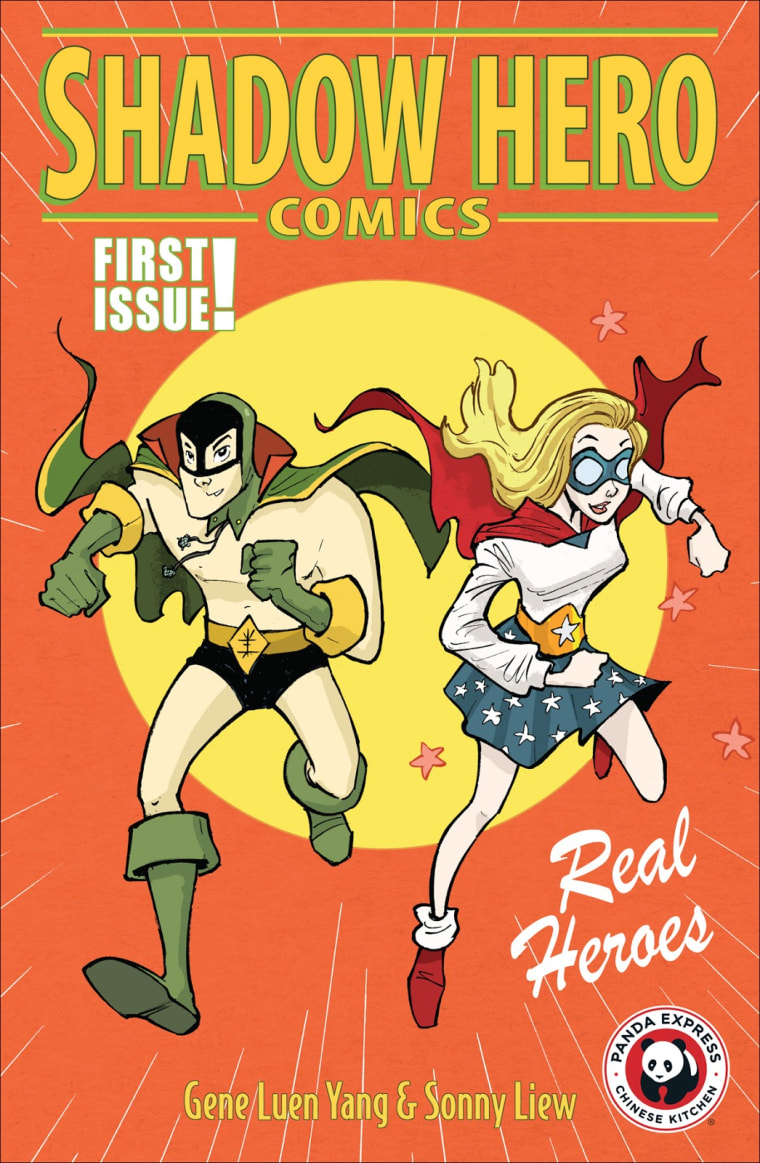In the 1930s, a brand new kind of character began to appear in American comic books. They wore colorful masks and capes. Many of them had magic powers. All of them fought for justice. They were called superheroes.
"This May, and every May, we celebrate the fact that there is no one way to be an American — or a superhero."
Within a decade, America had fallen in love with superheroes. Their comic book adventures were read by kids across the nation, and publishers seemed to introduce new costumed crimefighters every week.
During this time, an artist named Chu Hing created a superhero called the Green Turtle, which made him among the first Chinese Americans to draw American comic books.
Chu Hing was not a very famous artist. He worked for several publishers, including Marvel Comics (which was known as Timely Comics back then), but most of today’s comic book fans have no idea who he was. The few who do recognize his name don’t normally count him as one of the greats.
Just like his creator, most of today’s fans have no idea who the Green Turtle is. (The Green Turtle is not a very popular character; his series only lasted five issues before it was canceled.) In a lot of ways, the Green Turtle is just another Batman rip-off. He flies around in a turtle plane and operates out of a turtle cave. His costume is, by modern standards, ridiculous: a cowl, a cape, boots, gloves, shorts, and not much else. No shirt, no pants.
A fascinating rumor surrounds the Green Turtle’s creation, however. Supposedly, Chu wanted his character to be Chinese American, just like him, but his publisher wouldn’t allow it. They didn’t think that a Chinese-American superhero would sell.
And supposedly, Chu rebelled by obscuring the most basic facts about his superhero. He never tells us his origin story. He never reveals his secret identity. And, in the art, he almost always hides the Green Turtle’s face. Chu supposedly did all this so that he and the reader could imagine the Green Turtle as he originally intended: as a Chinese American.
Five issues are not enough to earn a place in comic book history. At the end of his career, Chu Hing probably assumed that he and the Green Turtle would be completely forgotten.
But they weren’t forgotten.

A few years ago, I read an article about Chu Hing and the Green Turtle on the internet. I was fascinated by the unanswered questions that Chu Hing left behind. Were the rumors true?
Then in 2014, I teamed up with my friends Sonny Liew and Janice Chiang to create a graphic novel called The Shadow Hero, in which we make up a secret identity and an origin story for the Green Turtle. We firmly established him as the first Chinese-American superhero.
RELATED: Editorial: The ‘Asian Superhero’ Is Not An Oxymoron
The folks at Panda Express are as fascinated by Chu Hing and the Green Turtle as Sonny, Janice, and me. We believe that this obscure cartoonist and his equally obscure character embody the spirit of Asian Pacific American Heritage Month. To celebrate, the original Shadow Hero creative team has reunited to create Shadow Hero Comics #1, which will be given away with every Panda Express kid's meal sold in May — the first giveaway ever for a Panda Express kid's meal. In the comic, we tell a brand-new Green Turtle story that highlights the grit, grace, and gratitude required to become a hero. (The comic book can also be downloaded at Panda Express' website celebrating APAHM.)
The superhero genre is deeply American. It was invented in America. It’s most popular in America. And at their best, superheroes express America at its best.
Asian/Pacific Americans often struggle with perceptions of foreignness. No matter how long we or our families have been here, we are sometimes made to feel foreign simply because of our looks.
And that’s why the Green Turtle captured my imagination and my heart, despite his ridiculous costume. When I discovered this (possibly) Asian American superhero who dates back to the very early days of this deeply American genre, a feeling of affirmation washed over me. It was as if Chu Hing’s creation was telling me, “Folks like us have been here all along, even if we’ve had to keep our faces hidden.”
This affirmation impelled Sonny, Janice, and me to create The Shadow Hero graphic novel and impels our partnership with Panda Express to create Shadow Hero Comics #1. I believe that this affirmation is the spirit of Asian Pacific American Heritage Month. This May, and every May, we celebrate the fact that there is no one way to be an American — or a superhero.
And just like our favorite costumed crimefighters, when we are at our best, we express America at its best.
Gene Luen Yang is a graphic novelist, whose book "American Born Chinese" was the first graphic novel to be nominated for a National Book Award, and the first to win the American Library Association's Printz Award. In 2016, Yang was named a MacArthur Fellow and was also appointed by the Library of Congress, Every Child A Reader, and the Children's Book Council as the National Ambassador for Young People's Literature.
Follow NBC Asian America on Facebook, Twitter, Instagram and Tumblr.